Yorkshire & the Humber region is home to stunning landscapes & historic cities. Majestic peaks of North York Moors to the vibrant city of Leeds.
England is made up of nine different regions, each one unique in its individual character in history, geography, purpose, and tourist attractions. In this first article, I am focusing on the North West Region, then moving on to the other regions in other articles. If you would like to know more about the other regions, read through the links.
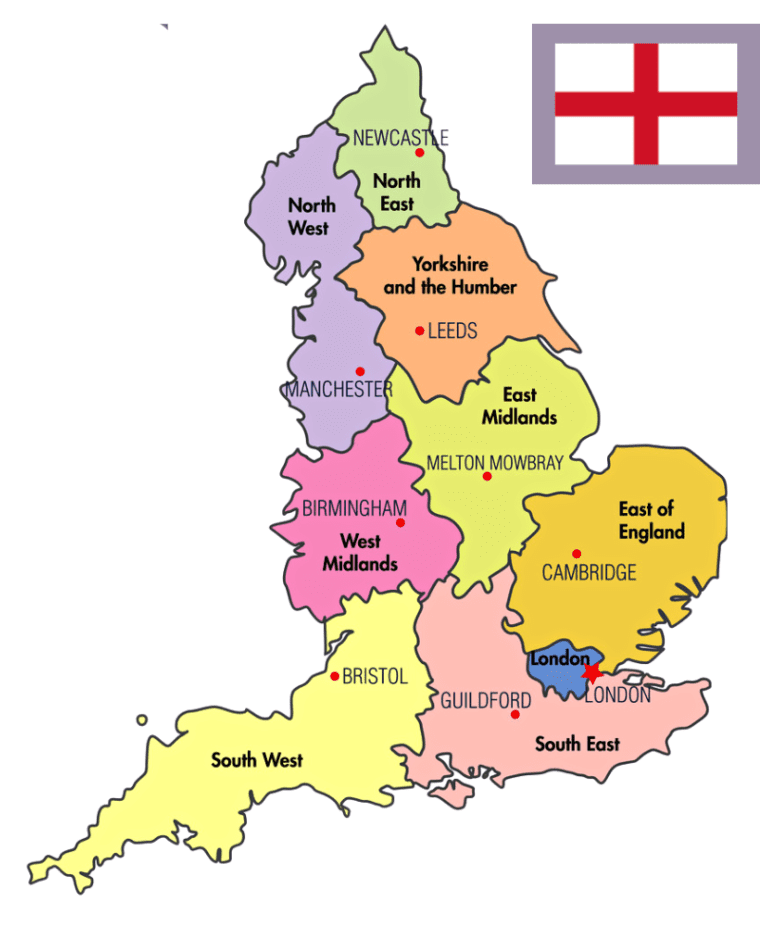
9 Different Regions
North East – largest city Newcastle
North West – largest city Manchester
Yorkshire & the Humber – largest city Leeds
East Midlands – largest city Melton Mowbray
West Midlands – largest city Birmingham
South West – largest city Bristol
South East – largest city Guildford
London – London
East of England – largest city Cambridge
Contents
- What are the Main Cities and Towns of the Yorkshire & the Humber Region of England?
- Does the Yorkshire and Humber Region of England have Castles?
- What is the History of Yorkshire & the Humber Region?
- 7 Best Things to do as a Tourist in the Yorkshire and Humber Region of England
- What is available for the Adventure Traveler in Yorkshire & Humber
What are the Main Cities and Towns of the Yorkshire & the Humber Region of England?
The main cities of Yorkshire & the Humber region of England are Leeds, Sheffield, Hull, Rotherham, and Bradford. Of these, Leeds is undoubtedly the most popular for tourists, offering an abundance of attractions from its rich cultural heritage to its diverse shopping and dining experiences.
This region is home to a wide variety of towns, each with its own unique charm. Some of the best towns to visit in the region include York, a city steeped in history where visitors can explore the iconic York Minster.
For outdoor enthusiasts, the Yorkshire Dales offer impressive countryside views and plenty of opportunities for hiking and cycling. Whitby is a popular coastal town to explore, while Harrogate is a classic spa town with Georgian architecture and plenty of tea rooms.
Topography of the Yorkshire and Humber Region of England
The Yorkshire & Humber region of England is known for its breathtaking topographical features. Spanning from the River Tees in the north to the River Trent in the south, the area is home to some of the most striking landscapes in the country. From rolling hills to dramatic coastlines, the region offers visitors a variety of scenery to explore.
It is characterized by its diverse range of topographical features. The area consists of a variety of landscapes, ranging from the mountainous North York Moors to the low-lying wetlands of the Humber Estuary. Covering an area of over 500 square miles is the North York Moors which is the largest area of upland in the region. A variety of habitats, including heathland, woodland, and moorland, provide a popular destination for walkers and cyclists.
In the south of the region, the Humber Estuary is a vast expanse of low-lying wetlands. It is home to a wide range of wildlife, including migrating wildfowl, as well as many species of fish. The Humber Bridge, which spans the estuary, provides a unique viewpoint from which to appreciate the area’s natural beauty.
What is the History of Yorkshire & the Humber Region?
Yorkshire and the Humber are bordered by the North Sea to the east, the Pennines to the west, and the Peak District to the south. This region has a long and fascinating history that dates back to the Iron Age and beyond.

Brigantes
The earliest inhabitants of Yorkshire and the Humber were the Brigantes, a Celtic tribe who dominated the region for centuries. Around 43 AD, the Romans arrived and took control of the area, which later became known as the Province of Britannia.

Anglo-Saxons
Many towns and fortifications were built by the Romans, and the region prospered under their rule. By the 5th century, the Anglo-Saxons had taken control of the area and it was divided into the kingdoms of Northumbria and Mercia.

Normans
The Normans invaded and conquered the region in the 11th century, and for the next few centuries, Yorkshire and the Humber were ruled by a series of powerful nobles. During this time, the region was divided into two separate counties, Yorkshire and Lincolnshire.

Henry VIII
The 16th century was a time of great change in Yorkshire and the Humber. Henry VIII’s decision to dissolve the monasteries in the region had a huge impact, with many of the religious institutions closing and their lands being seized. This was a major blow to the local economy, with many people losing their livelihoods.
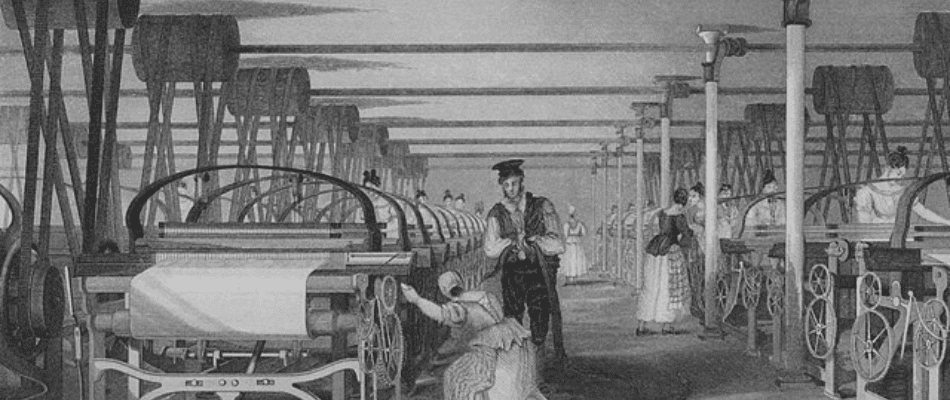
Industrial Revolution
The Industrial Revolution brought new opportunities to the region, with new industries such as coal mining, steel production, and engineering becoming prominent. This led to a population boom, as people sought to take advantage of the new jobs and higher wages.

Service Industry
More recently, Yorkshire and the Humber have become major hubs for the service industry. Many of the region’s cities and towns have become popular destinations for tourists, while the region’s universities have become renowned for their research and teaching.
Overall, Yorkshire and the Humber have come a long way since Henry VIII dissolved the monasteries. It remains an important part of the UK’s economy and culture and is a great place to live and work.
Does the Yorkshire and Humber Region of England have Castles?
Yorkshire & the Humber Region of England boasts a variety of castles, from ruins to those still inhabited. The majestic ruins of Skipton Castle, Conisbrough Castle, and Middleham Castle stand as reminders of the past, while the royal fortress of Bolsover Castle and the picturesque Spofforth Castle remains in good condition.
For those looking for a matchless encounter, some castles in the region are open to overnight guests. One can stay in the Tudor splendor of Sandal Castle or the lavish surroundings of Ripley Castle and experience life in an ancient castle. All of these castles provide a glimpse of the region’s history and culture.
Helmsley Castle
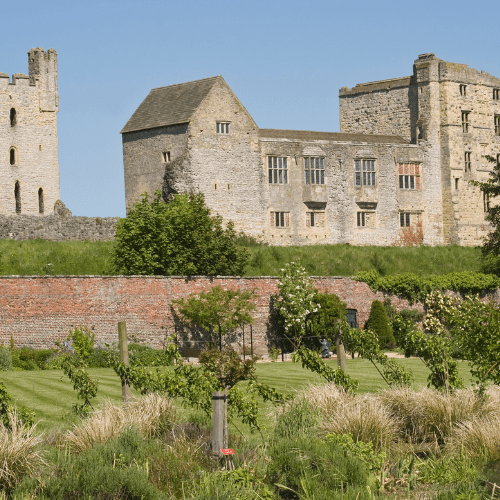
- Helmsley Castle is a medieval castle located in the beautiful town of Helmsley, in the North York Moors National Park
- The castle is set in an impressive defensive site, surrounded by a water-filled moat and protected by a steep mound and curtain wall. It is one of the best preserved Norman motte-and-bailey castles in England.
- Visitors can explore the ruins of the castle and its gardens, as well as learn about its history and its connection to some of the most famous people in British history.
Wentworth Castle
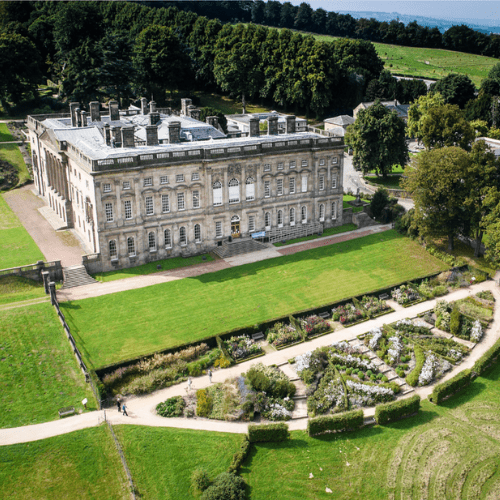
- Wentworth Castle is a Grade I-listed Georgian mansion house located near Barnsley in the Yorkshire and Humber region of England.
- It was built in 1725 by Thomas Watson-Wentworth, 2nd Marquess of Rockingham, and is now owned by a charitable trust.
- The castle is known for its beautiful gardens and grounds, which include a walled garden, a formal terrace garden, and a parkland filled with a variety of trees and shrubs.
Bolton Castle
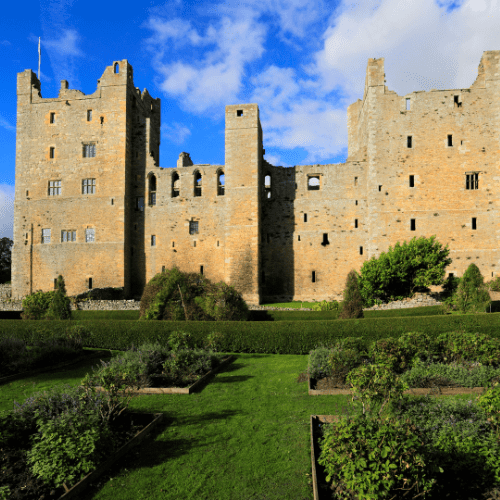
- Bolton Castle is a 14th-century medieval castle situated in Yorkshire Dales, England. It is an iconic landmark of the region and one of the most complete and best-preserved castles in the country.
- The castle was built by Richard le Scrope, 1st Baron Scrope of Bolton, in 1379, and served as a formidable fortress during the turbulent times of the War of the Roses. It is surrounded by a deep dry moat and defended by a barbican, portcullis, and drawbridge.
7 Best Things to do as a Tourist in the Yorkshire and Humber Region of England
Yorkshire and Humber Region of England have great places for tourists. From exploring historical cities and towns to walking beautiful coastal paths, there’s something for everyone. Visit rare attractions, sample local cuisine, and immerse yourself in the culture and heritage of the region. There’s a vibrant nightlife, stunning countryside, and plenty of outdoor activities to enjoy.

Why Should you Visit the Hull Maritime Museum?
Hull Maritime Museum, located in the Yorkshire and Humber region of England, opened in 1975. It is the largest maritime museum in the UK and is dedicated to the history of Hull’s seafaring past. The museum contains a variety of interactive exhibits, including full-scale replicas of historic vessels and a number of interactive displays. Visitors can also view a large number of artifacts, such as model ships and navigational equipment, as well as maritime paintings and photographs.
It is also home to the Arctic Corsair, a deep-sea trawler that was built in Hull in 1959 and is now a preserved museum ship. Other highlights include the Arctic Corsair’s engine room, the Captain’s Cabin, a lifeboat gallery, and a range of interactive maritime exhibits. The museum is also home to a large collection of ship models, including a replica of the Mayflower, which sailed from England to America in 1620.
Uniquely, the museum also contains a collection of objects from the Beverley Submarine, which was built in Hull in 1955 and later commissioned as the HMS Seal. Uniquely, visitors can also explore the museum’s ‘virtual dock’ which allows them to explore a number of historic vessels through a virtual reality experience.
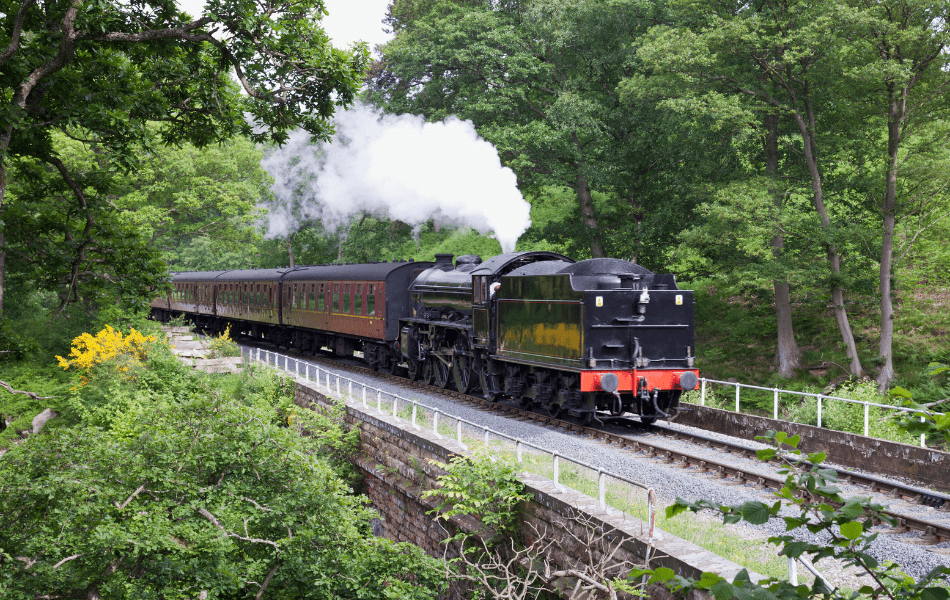
Have you ever taken a Ride on the North York Moors Railway?
The North York Moors Railway is a heritage railway in the Yorkshire and Humber region of England. It opened in 1973 and offers a journey through the picturesque moors of North Yorkshire. It is 29 km long and takes passengers through the traditional market towns of Pickering, Levisham, Newtondale, and Goathland.
There are plenty of sights to admire along the way, including lush green fields, colorful wildflowers, and the stunning North York Moors National Park. The journey takes about 2 hours, and there are a variety of attractions and experiences to enjoy along the way.
Passengers can visit the Pickering Station Museum, take a ride on the steam engine, or enjoy a meal in the café car. The North York Moors Railway is a great way to explore the region and experience the beauty of the countryside.

Would you like a Day Out at Spurn Point National Nature Reserve?
Hiking and cycling enthusiasts will love the Spurn Point National Nature Reserve in the Yorkshire and Humber Region of England. Spend the day exploring the stunning coastal landscape and take in the breathtaking views of the Humber Estuary. Spot wildlife like the Little Tern, Avocet, and Grey Seal while you’re there.
About 3 hours from Leeds, it is the perfect day trip. The reserve has several kilometers of walkways and cycling trails that offer a great way to experience the stunning beauty of the area. Visitors may also take pleasure in an array of beach activities such as swimming, surfing, and rock pooling. Appreciate a picnic lunch with friends or family and watch the sunset over the sea. Spurn Point is an unforgettable place to spend a day in the great outdoors.

Do you Love Viewing Cathedrals? York Minster
The York Minster, also known as the Cathedral and Metropolitical Church of Saint Peter in York, is located in the Yorkshire and Humber region of England. Built in the 13th century, the Minster was commissioned by the Norman-French Archbishop of York, Walter de Grey.
This building is an example of Gothic architecture and boasts impressive acoustics, making it an ideal venue for worship and concerts. Its stained glass windows are some of the largest in the world and its library houses one of the oldest collections of printed books in Europe.
Being one of the tallest central towers in the world and its crypt contains the remains of Saint William of York. This cathedral is one of the most iconic landmarks in Yorkshire and a true testament to the architectural brilliance of its founders.
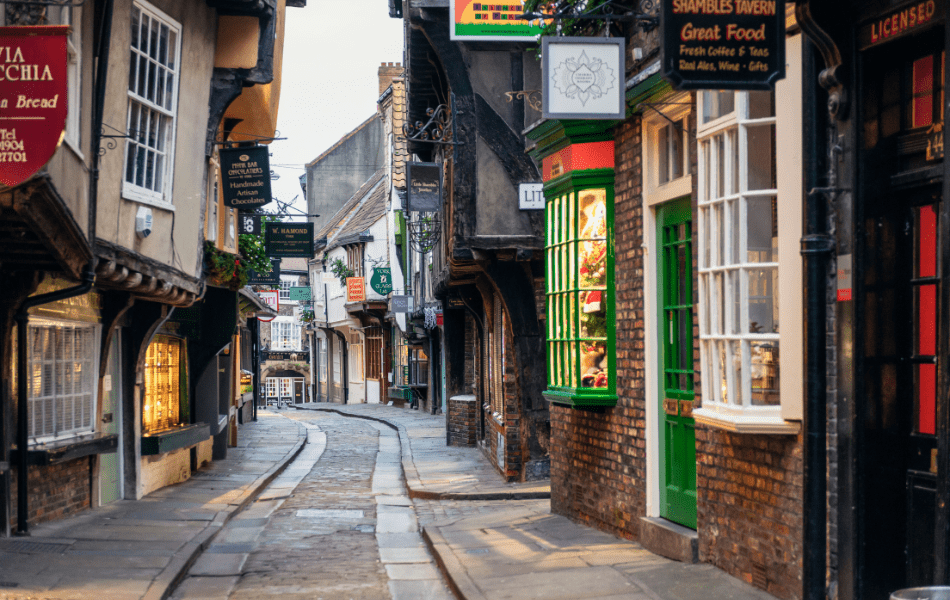
Why do you need to Visit Shambles Street in York?
Shambles Street in York has been around since the medieval era. It dates back to the 11th century and is one of the oldest streets in York. The street originated as a meat market and its name derives from the word ‘shambles’ which means ‘slaughterhouse’ in Old English.
Nowadays, Shambles Street is a shopping destination with a wide range of independent shops, cafes, and restaurants. Tourists should visit Shambles Street to get a glimpse of its history and take in the atmosphere.
Character oozes from the narrow cobbled paths and overhanging timber-framed buildings. Its quaint charm makes it a popular tourist attraction and its vibrant atmosphere is a great way to spend an afternoon.
Shambles Street is also home to many independent retailers, antique shops, and art galleries. There are plenty of activities for visitors to take pleasure in such as street performances, local markets, and guided tours. Shambles Street is a must-visit for any tourist visiting York.
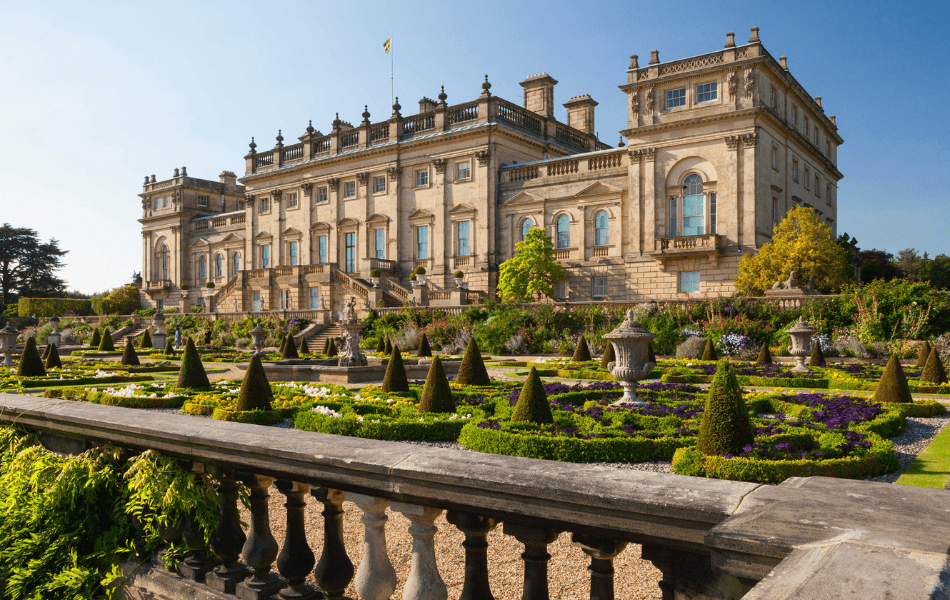
Aren’t you Curious about Harewood House?
Harewood House, located in Leeds, originated in the 18th century. Built by Edwin Lascelles in 1759, the house was designed to be a grand estate. Tourists should visit Harewood House to experience its art, culture, and heritage, encompassing many pieces of artwork and a collection of furniture and porcelain.
Harewood House has a total of 145 rooms, yet not all of these rooms are open to the public, as some are used for private functions or are part of the family’s private residence. The public is welcome to visit the state rooms, which include the entrance hall, saloon, drawing room, dining room, library, chapel, and Picture Gallery.
Additionally, the grounds of the estate are vast, boasting a lake, a bird garden, and a maze. Visitors can also take part in activities such as falconry, archery, and a free discovery trail. Look out for a number of exhibitions and events throughout the year, such as the Harewood Food and Drink Festival.
With its art, culture, and heritage, Harewood House is a must-visit for tourists in the Yorkshire and Humber Region of England.

Have you ever heard of “The Deathly Dark Ghost Tour of York”?
The Deathly Dark Ghost Tour of York is a thrilling, spine-tingling adventure. The tour takes you on a two-hour journey deep into the haunted underbelly of York, exploring its dark and mysterious past. You will be guided by a professional tour guide through some of the city’s most haunted locations, such as the notorious Clifford’s Tower, the Shambles, and the ancient city walls.
Along the way, you will hear stories of ghastly ghosts, sinister spirits, and tales of terror from centuries past. You will also get to experience the eerie atmosphere of the city’s oldest streets and alleyways. This tour is sure to leave you with a haunting and unforgettable experience.
What is available for the Adventure Traveler in Yorkshire & Humber
Yorkshire & Humber is a great destination for adventure travelers seeking thrilling occurrences. With its stunning natural beauty and diverse landscapes, the region offers a range of exciting activities that will leave visitors feeling energized and exhilarated.
From mountain biking and water sports to rock climbing and even caving, adventure travelers will find plenty of opportunities to explore, challenge and appreciate themselves in the Yorkshire & Humber region.
Mountain biking is a great way to explore the region’s varied terrain. With an extensive network of trails, adventure travelers can experience the best of Yorkshire & Humber’s countryside, forests, fells, and dales. For more experienced riders, the Yorkshire Dales National Park provides a challenging yet rewarding biking experience.
The park’s rugged landscapes, combined with its beautiful views, make it a great place to explore. For those looking for a more aquatic experience, Yorkshire & Humber’s coastlines are ideal for water sports. Visitors can take part in activities such as kayaking, sailing, canoeing and even kitesurfing. With its diverse coastline, the region offers a range of locations for these activities, from sheltered bays to wave-crashed beaches.
Hiking in the Yorkshire & Humber region is an absolute delight! From the rolling hills of the North York Moors to the rugged beauty of the Yorkshire Dales, there is something for everyone. For those looking for an easy stroll, the stunning coastal path between Scarborough and Whitby is perfect.
For more experienced hikers, the challenging climbs of the Yorkshire Three Peaks are a must. There are plenty of stunning views along the way, and opportunities to spot some of the region’s incredible wildlife.
Hikers can also explore the quaint villages and charming market towns dotted throughout the region. With its variety of trails and spectacular scenery, the Yorkshire & Humber region is a great destination for hikers of all levels of experience.

Do like to Explore Caves in the Yorkshire & Humber Region?
Home to some of the most spectacular caves in the country. From the majestic Gaping Gill, the largest underground chamber in Britain, to the awe-inspiring Ingleborough Cave, a vast system of chambers, galleries,, and caverns, there is something to suit every explorer.
The vast and mysterious Thornton Force Cave is another must-see, with its stunning waterfalls and rocky passages. For the more adventurous, there is the remarkable White Scar Cave, a vast labyrinth of passages and chambers over 300m deep.
Finally, the awe-inspiring Hull Pot, with its sheer walls and deep pools, is an experience not to be missed. Whatever your preference, these staggering caves provide a magical experience that will remain with you for a lifetime.
Looking at going to this region of England? Let us know in the comments section below what you are planning, so your trip can benefit others.
Recent Posts
Discover insider tips to find cheap flights from the UK, save on easyJet, Ryanair & BA, and score the best weekend and last-minute deals. Why You’re Paying Too Much for Flights Most UK...
Discover the sounds of travel, from laughing kookaburras to market chatter, church bells to ocean waves - a journey heard as much as seen. It always starts with a sound. The other day, walking...


16 thoughts on “Yorkshire & the Humber Region”
Comments are closed.